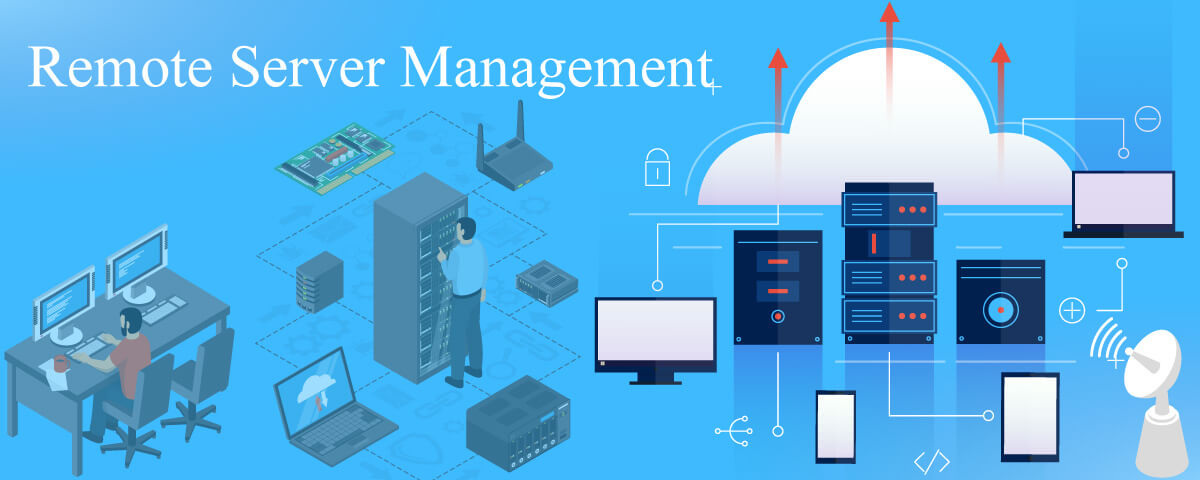What is meant by Remote Server Management, and why it is needed?

Introduction
The term “remote server management” is used to describe the ability of businesses to monitor and manage their IT infrastructure from a distance. Remote server management encompasses both manual and automated processes that allow data center operators to keep tabs on their hardware, software applications, power consumption and environmental conditions like temperature, humidity, and air pressure.
Remote server management and monitoring tools are software applications that allow IT administrators to remotely monitor and manage servers from any location. This can be done through a web-based interface, a mobile app, or a command-line interface.
Remote Server Management tools can be used to perform a variety of tasks, including:
- Monitoring server performance
- Troubleshooting server problems
- Applying software updates and patches
- Managing user accounts and permissions
- Backing up and restoring server data
TI Infotech’s remote server management and monitoring tools can help businesses of all sizes to improve the uptime and security of their IT infrastructure. By providing IT administrators with the ability to remotely monitor and manage servers, these tools can help to reduce downtime, improve performance, and prevent security breaches.
Remote Server Management is needed nowadays for a number of reasons, including:
- The increasing number of remote workers. As more and more people work remotely, businesses need to be able to manage their servers from anywhere. Remote server management allows IT administrators to access and troubleshoot servers from their own homes or offices, without having to travel to the physical location of the server.
- The growth of cloud computing. Cloud computing has made it possible for businesses to host their servers in remote data centers. This means that IT administrators need to be able to manage these servers from a central location, which is where remote server management comes in.
- The increasing complexity of servers. As servers become more complex, it becomes more difficult to manage them effectively. Remote server management tools can help IT administrators to simplify the management process by providing them with a centralized view of all their servers.
- The need for increased security. Remote server management can help to improve the security of your servers by allowing you to patch them and apply security updates from a central location. This can help to protect your servers from cyberattacks.
Overall, remote server monitoring is a valuable tool that can help businesses to improve the uptime, performance, and security of their servers. If you are looking for a way to manage your servers more effectively, then remote server management is a great option to consider.
Here are some of the Benefits of using TI Infotech’s remote server management and monitoring tools:
- Increased uptime: By proactively monitoring servers for potential problems, TI Infotech’s tools can help to prevent downtime.
- Improved performance: TI Infotech’s tools can help to identify and resolve performance bottlenecks, which can improve the overall performance of your servers.
- Enhanced security: TI Infotech’s tools can help to detect and prevent security breaches.
- Reduced costs: By centralizing server management, TI Infotech’s tools can help to reduce the cost of IT operations.
If you are looking for a reliable and affordable way to manage your servers remotely, then TI Infotech’s remote server management and monitoring tools are a great option. With these tools, you can be confident that your servers are always up and running, and that your data is secure.
Read More: What are the Five Core Elements of the Data Center Infrastructure? | TI Infotech Blog
